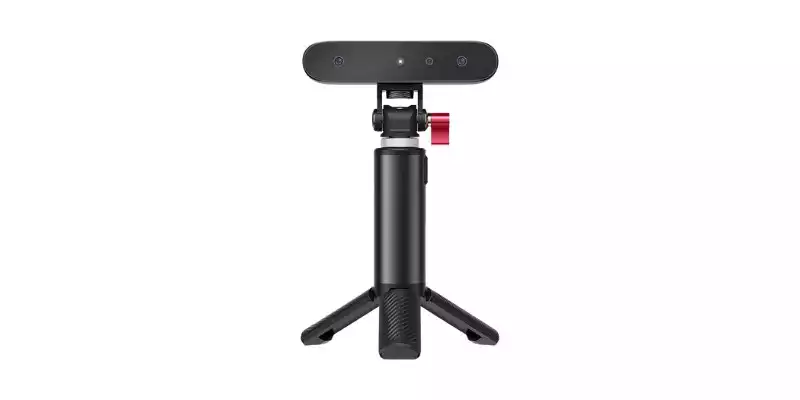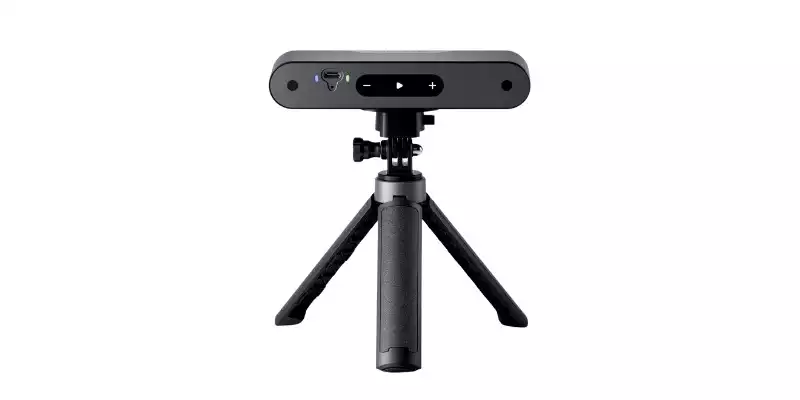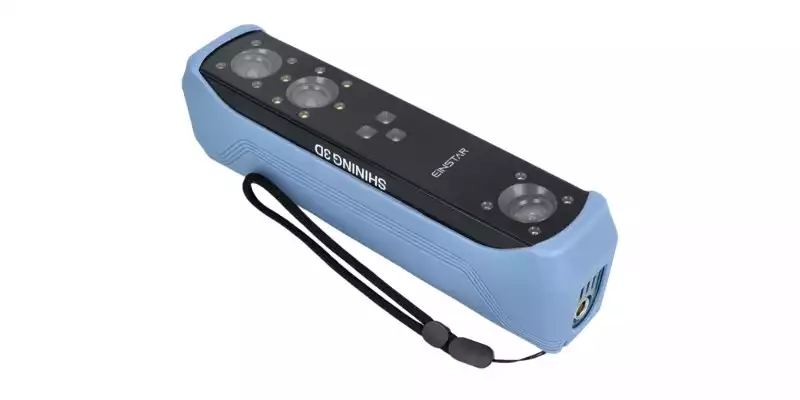We reviewed the best affordable 3D scanners based on accuracy, ease of use, and more to put together our top low-cost scanner picks:
The best cheap 3D scanner is the Revopoint POP 3.
The POP 3 is ideal for 3D printing, digital media, and e-commerce 360-degree object scans. It’s an all-rounder capable of impressive quality scans thanks to a 0.05 mm point distance resolution, plenty of in-the-box goodies, and a seamless scan-to-model workflow.
|
|
|
|
|
4.3
|
4.7
|
4.6
|
|
$329.00
|
$659.00
|
$959.00
|
|
0.16 mm
|
0.05 mm
|
0.1 mm
|
|
560 x 820 x 700 mm
|
2500 x 2500 x 2500 mm
|
434 x 379 x 400 mm
|
|
Dual-camera infrared structured light
|
Dual-camera infrared structured light
|
Structured light scanning
|
|
30 FPS
|
12-18 FPS
|
14 FPS
|
|
OBJ, STL, and PLY
|
PLY, OBJ, and STL
|
OBJ, STL, PLY, P3, and 3MF
|
|
|
|
|
However, if you’re looking for a super cheap 3D scanner, I recommend the Creality Scan Ferret. It’s by far the best under $400, but still offers a 0.16 mm resolution, speedy 30 FPS capture, and user-friendly scanning process.
If you have the money, the Shining3D Einstar is the best premium option. It’s a mid-range scanner for under $1,000 that bundles in advanced features like smart tracking, a 0.1 mm resolution, and impressive color accuracy ideal for digital archiving, light reverse engineering, body and face scans, VR/AR, and design projects.
1. Revopoint POP 3 – Best Overall
- Price: $659 – Available at Revopoint here
- Resolution: 0.05 mm
- Max Scan Volume: 2500 x 2500 x 2500 mm
- Technology: Dual-camera infrared structured light
- Speed/Frame Rate: 12-18 FPS
- Export File Format: PLY, OBJ, and STL
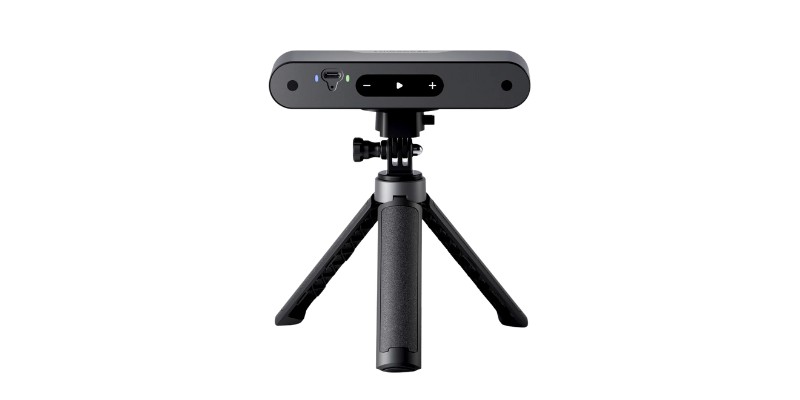
Pros
Improves on the already fantastic POP 2
Best resolution and precision for the price
Ideal for medium-size object scanning
Versatile: both handheld and stationary scanning options
Cons
Occasionally distorted face scans during my hands-on testing (though you can fix this in post-processing)
The Revopoint POP 3 is the best cheap 3D scanner overall. It’s not a premium scanner, but it’s also far better quality than other entry-level scanners.
It’s a generalist scanner suitable for everything from sneakers and ornaments to digital media and models for 3D printing. It employs a dual-camera infrared structured light technology that can still scan up to a 2500 x 2500 x 2500 mm max scan volume, a solid 0.05 mm point distance resolution, and smooth 18 FPS capture.
What makes the Revopoint POP 3 unique however is the frictionless workflow. The scanning process is effortless, and the POP 3 is very versatile, offering handheld scanning or stationary scanning using the tripod. Then when you’re done scanning, you can manually edit your scan to remove noise, or have the AI tools within the Revo Scan software remove artifacts and scanning oddities.
We were impressed with the POP 2 when we tested it out for review, and the POP 3 has significantly upgraded on the POP 2. The POP 3 has upgraded color date, brightness, capture speed, and more.
Though, if you want to save a few hundred dollars, the POP 2 is still a good budget alternative. And, if your scanning use cases revolve around smaller objects, such as jewelry, then go with the Revopoint MINI. It’s the cheapest specialist jewelry 3D scanner around. There’s also the Revopoint INSPIRE, which is the cheapest and worst-quality scanner, but it still performed adequately when we tested it.


However, for even more savings, there’s also the Creality Scan Ferret. Though the quality isn’t as good as the POP 3, it’s respectable for the price, especially if you just want a starter scanner.
And, if you have a few extra hundred dollars to spare, the Shining3D Einstar is a more powerful 3D scanner overall. It’s better for quality digital duplications, enthusiast reverse engineering, and scanning for 3D printing.
Scanner Features:
Single-frame precision of up to 0.05mm
Fast scanning speeds of up to 18 fps
An RGB camera with 30% larger aperture
Better color accuracy
9-axis IMU for a better tracking and frame stitching
Single capture range: 244 x 180mm
2. Creality Scan Ferret – Best Budget Pick
- Price: $329.00 – Available at Creality here
- Resolution: 0.16 mm
- Max Scan Volume: 560 x 820 x 700 mm
- Technology: Dual-camera infrared structured light
- Speed/Frame Rate: 30 FPS
- Export File Format: OBJ, STL, and PLY
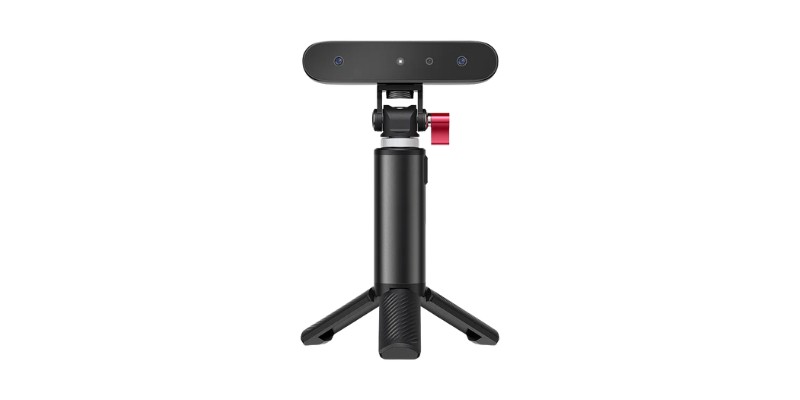
Pros
Cheapest usable 3D scanner right now
Fast scan speeds for the price
Cons
For an extra $200, you can get vastly better scan quality with the Revopoint POP 2 or POP 3
Creality’s take on the budget scanner, the Creality Scan Ferret, is ideal if you’re put off by the higher prices of the Revopoint POP 3 and Shining3D Einstar.
The Creality Scan Ferret is noticeably worse in scanning quality than the POP 3 and Einstar, but the results are good enough for hobbyist projects, especially if you’re willing to be patient and put in the work to tame the Ferret’s sometimes obtuse scan positioning.
With a 0.16 mm resolution, small footprint, provided tripod, handheld mode, and 560 x 820 x 700 mm max scan volume, the Scan Ferret works well for on-the-go scanning for 3D printing.
With 30 FPS capture, it’s also quite a bit faster than our other cheap 3D scanner picks. This makes for a pleasant scanning experience when paired with the no-nonsense, user-friendly Creality Scan software.
At under $350, it’s an affordable first scanner to get a sense of the technology’s capabilities. Just don’t expect to be reverse engineering or doing true-to-life conservation work. You’ll need a more expensive scanner for this.
For an extra $100, you can upgrade to the Creality Scan Ferret Pro, which has anti-shake technology to improve scan quality, a sharper 0.1 mm accuracy, full-color scanning, and Wi-Fi 6 transfer to speed up the scanning workflow. This version will suit you if you want better performance for e-commerce product scanning, basic AR work, some light digital archiving, and other forms of digital media.
3. Shining3D Einstar – Best Premium Pick
- Price: $959 – Available at Einstar store here
- Resolution: 0.1 mm
- Max Scan Volume: 434 x 379 x 400 mm
- Technology: Structured light scanning
- Speed/Frame Rate: 14 FPS
- Export File Format: OBJ, STL, PLY, P3, and 3MF
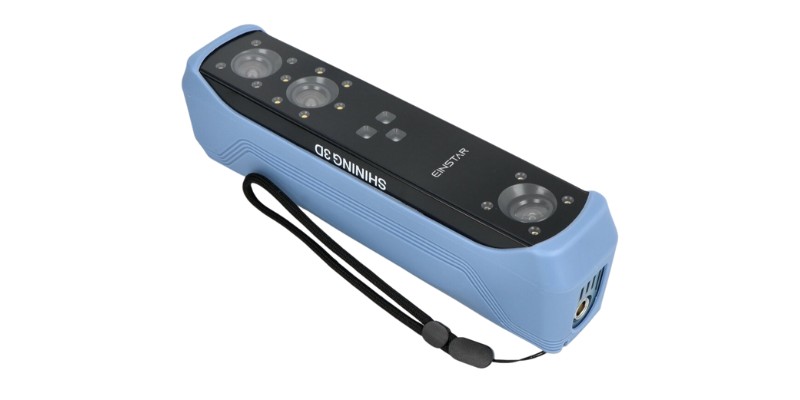
Pros
Best quality scans of any 3D scanner under $1,000
Includes parts and features from Shining 3D’s professional scanning range
Simple and easy workflow
Cons
More expensive than other options that offer almost as good scan quality
Shining 3D is better known for professional 3D scanners, but also entered the budget scanner market with the Einstar.
What’s most interesting here is that they’ve ported over many of the features from their high-precision industrial and dental scanners to produce by far the best scan quality of any low-cost 3D scanner under $1,000.
The Shining3D Einstar captures significantly better quality scans than the POP 3 and Creality Scan Ferret. This comes from better quality of captured features, positioning quality, higher-density point cloud data, and color fidelity. There’s also smart tracking and auto-alignment to speed up your scanning workflow.
This makes the Einstar suitable for a wider range of applications, including 3D printing modeling, digital archiving, body and face scans, VR and AR, light reverse engineering, design work, and e-commerce.
However, the Shining3D Einstar is by no means an industrial scanner, so don’t expect premium scan results like those produced by Shining3D’s EinScan H range, or EinScan SP.
If you have the budget for even higher quality, consider the desktop EinScan SE scanner, or the EinScan SP. These are more premium and expensive Shining 3D scanners, costing over $1,000, but they’re better for small object scanning, and medium-size scans for reverse engineering and design work.
4. BQ Ciclop – DIY Pick For Under $200
- Price: Check latest price at Amazon here
- Resolution: 0.5mm
- Scan time: 2-8 mins
- Maximum scan volume: 200 x 200 x 205 mm
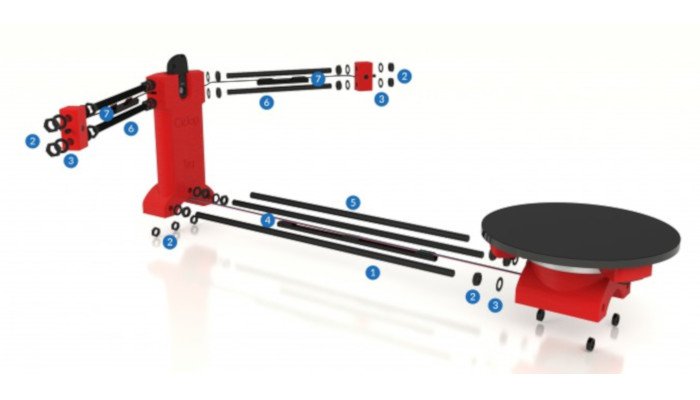
Pros
Can easily be modified to individual preferences.
Easy to build.
Precise and accurate scans thanks to the laser triangulation technology used.
Cons
Will take some time to set up.
The BQ Ciclop is a completely open-source 3D scanner that you can either build yourself at home if you prefer a DIY project, or buy it pre-assembled online.
This nifty budget 3D scanner has a good up to 250 x 205 mm scanning volume. It utilizes laser triangulation technology, so you don’t need to hold the scanner and move it around the object.
And since it’s open-source, you can modify it however you want — following the RepRap 3D printer philosophy. It’s a great cheap laser scanner, and one of the best value 3D scanners out there.
In terms of specs, it’s actually very good for the price — with resolutions between 0.3-0.5mm. You can easily scan to a free 3D software tool (the BQ Ciclop comes with Horus) via Bluetooth or USB, though experienced makers may prefer to work in a more professional 3D software package.
However, do keep in mind that we first included this on our budget 3D scanner recommendations back in 2018. In those 5 years since, the technology has improved greatly, and the Ciclop scanners are not cutting edge anymore. The scan times of 2-8 minutes were normal back then, but are insanely slow now.
Now in 2023 and beyond, we recommend picking up a scanner like the Revopoint POP 3 or MINI, for much faster and more accurate scanning.
Though, the Ciclop is a great DIY project for anyone who wants to build their own DIY 3D scanner. If you are going to embark on this DIY journey however, keep in mind that it isn’t the easiest scanner to assemble, and so you may want to buy it pre-assembled for a few dollars more.
Factors To Consider When Buying
- Portability: A handheld and portable scanner gives you more freedom of movement to capture scans of all shapes and sizes, even those located in hard-to-reach places. A lightweight scanner also makes scanning more manageable and less of a strain on your arm when capturing an object from multiple angles.
- Versatility: A scanner with both stationary and handheld modes offers the best of both worlds.
- Resolution: Even on a budget, expect under 1mm scan accuracy. Aim for 0.3 mm to 0.5 mm minimum to get good results even if you’re on a budget. The Revopoint POP 3, for example, offers 0.05mm precision for under $800.
- Scan volume: Lean towards 3D scanners with large scan volumes if you plan to make full-body scans, as these reduce the number of angles you’ll need for a complete scan. If you’re scanning small objects like jewelry, go for a scanner like the Revopoint MINI with a small scan volume but high precision.
- Ease of use: Look for scanners with one-touch scanning, multiple optimized modes, and user-friendly accompanying software. From testing several Revopoint 3D scanners, I personally recommend these as the most user-friendly, with the Revo Scan software letting you one-click edit your scans right after scanning.
- Export file formats: Good cheap scanners offer the ability to export scans to file formats compatible with all CAD software. STL, OBJ, and PLY are generally available on most budget 3D scanners, but check beforehand if you need a less common file format.
Here’s what you can (and can’t) do with budget 3D scanners
Unfortunately, you can’t expect the world if you’re paying under $1,000 for a 3D scanner. Expect lower-quality scans, longer scan times, and a less effective workflow.
In the same vein, you can’t expect to reverse engineer complex parts, scan both entire rooms and tiny objects with perfect detail, or scan extremely quickly.
However, here are some use cases most low-cost scanners can manage:
- Education and Schools – For developing 3D CAD modeling skills, design lessons, and general STEM education where high quality is not essential.
- 3D Printing – Scan real-world objects and convert them into 3D printed objects. Especially useful for those that don’t want to create 3D models from scratch in CAD software.
- Design – Rough, rapid prototypes based on real-world objects.
- 3D Room Scans – Renovation, digital real estate house viewings, interior design. Only scanners with larger scan volumes can do this however.
- AR and Animation – basic scans for game development, app development, and digital art.
What’s Changed?
In November 2023, we made a number of updates to this article:
- Replaced the Revopoint POP and POP 2 with the newer POP 3. However, we still recommend the POP 2 as a budget alternative to the POP 3.
- Removed the SOL 3D scanner, XYZ Handheld 2.0, Matter & Form V2 3D scanner, and Shining 3D SE and SP scanners. Some we felt were now out of date, and we also felt the Einstar was now a better budget alternative to the Shining 3D EinScan SE.
- Added the Shining 3D Einstar as the premium option among sub-$1,000 3D scanners.
- Added the Creality Scan Ferret as our new budget recommendation.
Jan 2024:
- Updated pricing information for 2024.
Other articles you may be interested in:
- Professional 3D scanners buyer’s guide
- DIY 3D scanner kits you can build at home
- The best 3D scanners – ranked
- Top 3D scanner apps (for iOS and Android)

